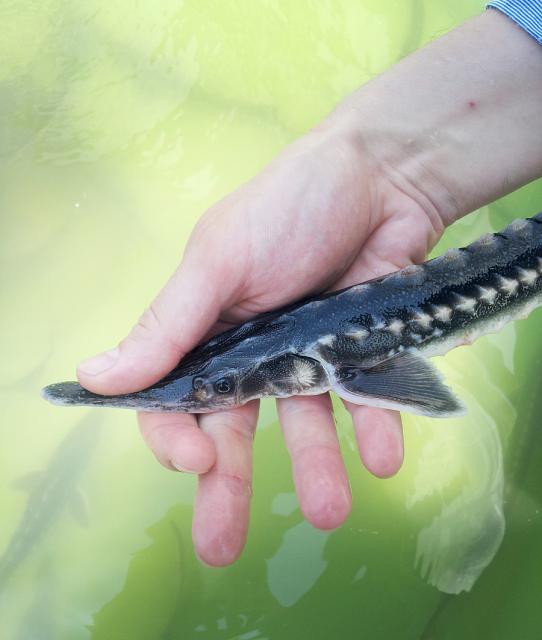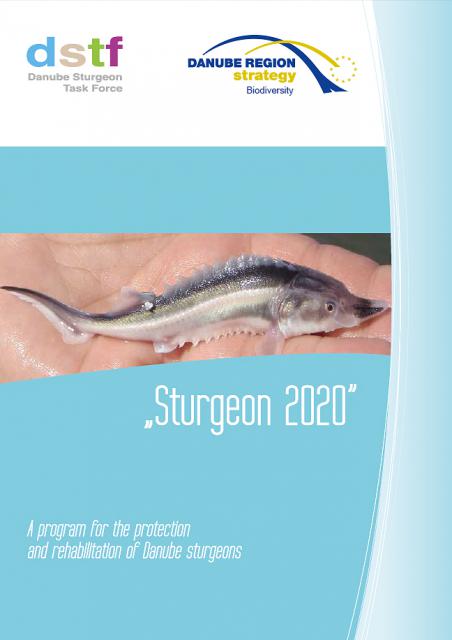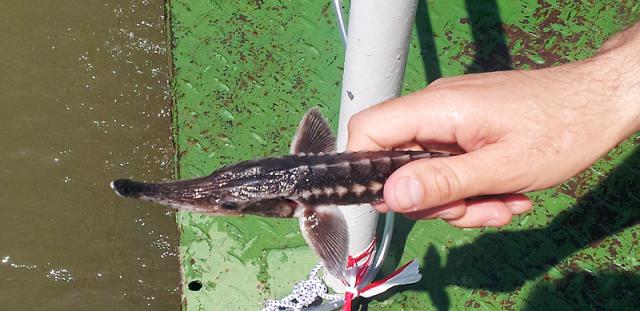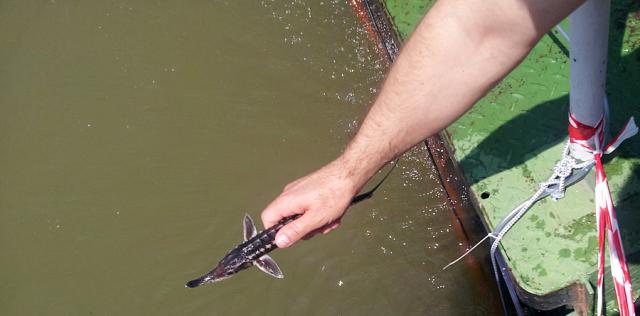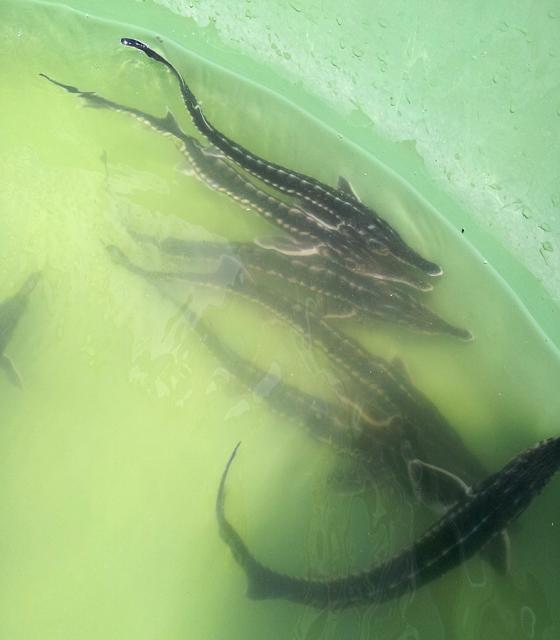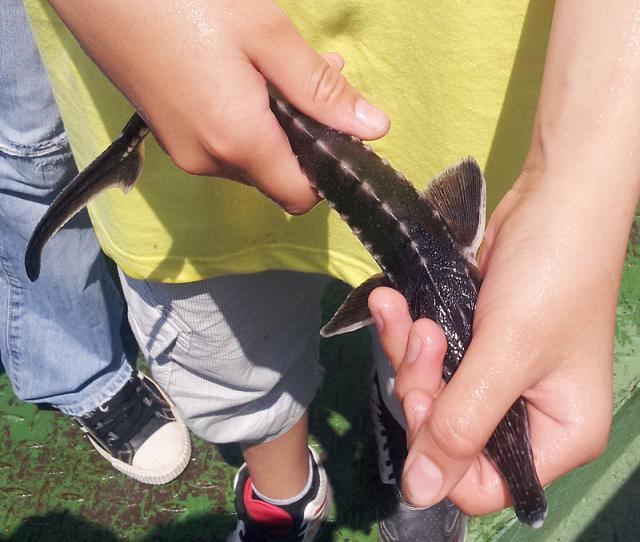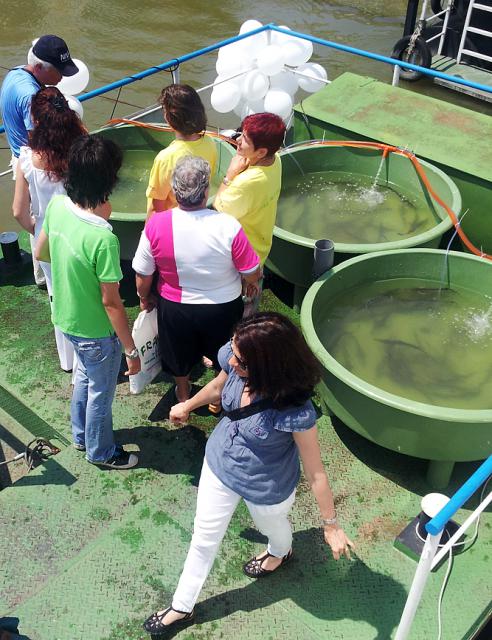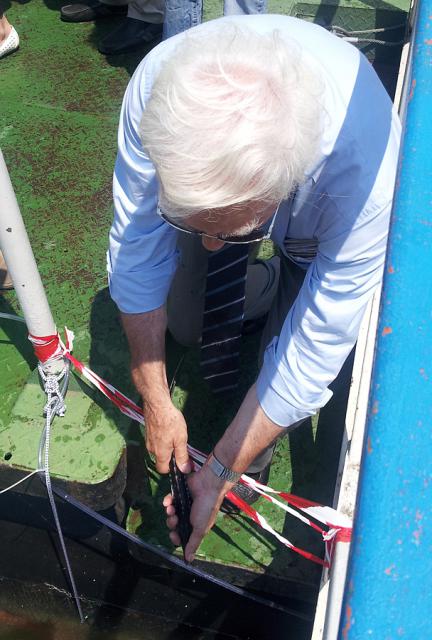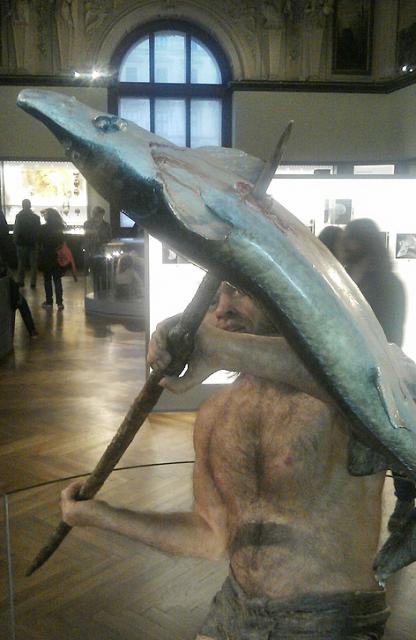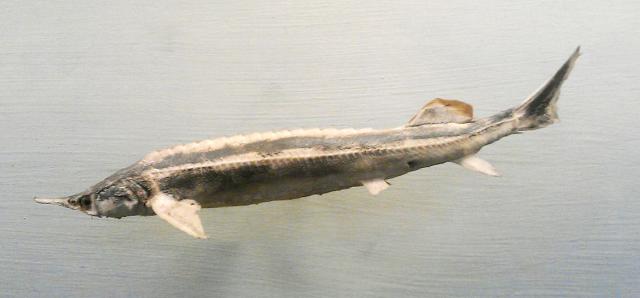Sturgeons in the Danube Basin
Sturgeons are sensitive to environmental pressures and therefore valuable indicators for healthy rivers. This is why the ICPDR has endorsed sturgeons as flagship species. There are six species of sturgeons native in the Danube River Basin, but the survival of these ancient fish is threatened by a range of issues. Through the "Danube Sturgeon Task Force", the ICPDR contributes to actions such as the protection of habitats, the development of migration aids, the breeding of healthy stocks in sheltered facilities, or the struggle against illegal fishing and caviar trade.
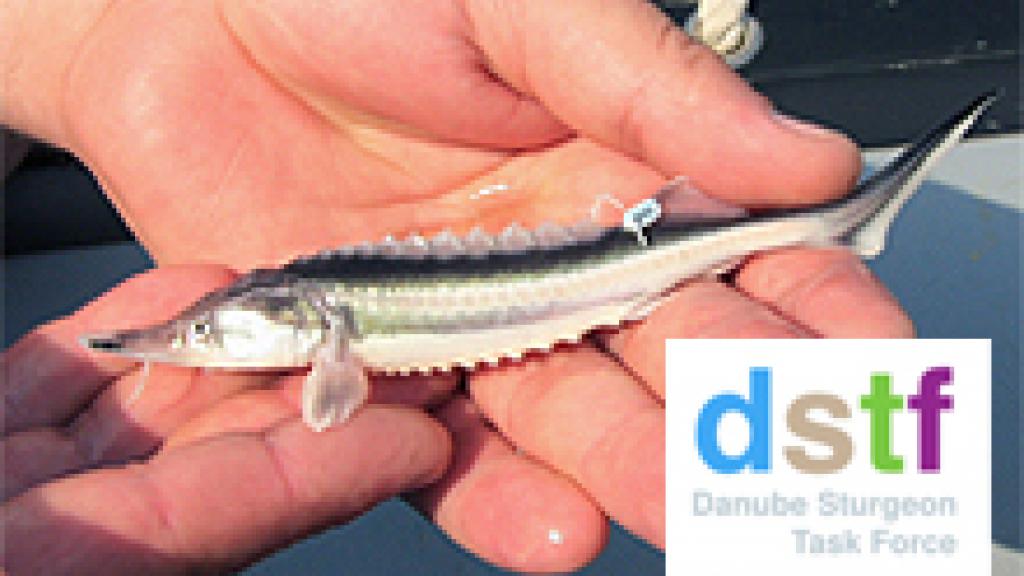
Sturgeons represent a natural heritage of the Danube River Basin and key indicator species for high ecological quality of rivers. Their dramatic decline in the last decades has become an issue of basin-wide importance that got the attention of the Danube countries and the European Commission.
There are six species of sturgeons native in the Danube River Basin, of which the beluga (Huso huso) is the most famous due to its role in caviar trade and its impressive size of up to six metres. The other species are of the genus Acipenser, A. gueldenstaedti, A. nudiventris, A. ruthenus, A. stellatus and A. sturio - the latter is considered extinct in the Danube River Basin.
To work towards the conservation of the Danube sturgeons, the program “Sturgeon 2020” was developed to ensure viable populations of sturgeon and other indigenous fish species by 2020.The key measures contained in this program are aimed at habitat protection, restoration of migration routes, supportive stocking programs, economic alternatives to sturgeon fishery, fighting illegal fishing and the caviar black market, ecological education, the harmonization of legislation and law enforcement.
These measures are grouped into six interconnected key topics:
- Acquiring political support for sturgeon conservation
- Capacity building and law enforcement
- In-situ sturgeon conservation
- Ex-situ sturgeon conservation
- Socio-economic measures in support of sturgeon conservation
- Raising public awareness
With its Sturgeon Strategy, adopted in December 2017 at the ICPDR Ordinary Meeting in Vienna, the ICPDR is contributing to the effort ensuring the survival and recovery of sturgeons in the Danube River Basin. More information is available here.
A first follow-up step was the organization of a Sturgeon Conference under the 2018 Austrian EU Presidency in July 2018 in Vienna. The event was organized jointly by the ICPDR and the Austrian Federal Ministry for Sustainability and Tourism (BMNT). All presentations, agenda and related documents as well as the key messages of the Conference are available for download.
The development of the “Sturgeon 2020” program was pursued through the “Danube Sturgeon Task Force”, a network of national and international public entities, NGOs and academic institutions founded in 2012, in which the ICPDR is participating. The aim of the DSTF is to foster synergies of the existing organizations and support the conservation of the highly endangered native sturgeon species in the Danube River Basin and Black Sea by promoting the implementation of the “Sturgeon 2020” program.
The DSTF operates in the frame and with direct support of Priority Area 6 (Biodiversity and Landscape Diversity) of the EU Strategy for the Danube Region, aiming to harmonize the sectoral policies under an integrative approach, balancing the environmental protection with the social and economic requirements at regional level.
